Oregon Ash, scientifically known as Fraxinus latifolia, belongs to the Oleaceae family and the species latifolia. Native to the Pacific Northwest, its range extends from southwestern Canada to California. This woody tree, recognized for its broad leaves—reflected in its Latin name “latifolia,” meaning “wide leaves”—stands out among ash species.
Typically, Oregon Ash reaches impressive heights of 18 to 24 meters, with a sturdy trunk diameter ranging from 41 to 76 centimeters. This native tree is a vital part of its ecosystem and adds striking natural beauty to the landscape.
| Common name | Oregon Ash |
| Botanical name | Fraxinus latifolia |
| Family | Oleaceae |
| Species | latifolia |
| Origin | Southwestern Canada to California |
| Life cycle | Woody |
| Plant type | Tree |
| Hardiness zone | 6, 7, 8, 9 |
| Sunlight | Full Sun |
| Maintenance | Medium |
| Soil condition | Clay |
| Soil ph | Acid |
| Drainage | Moist but Well-Drained |
| Growth rate | Fast |
| Harvest time | Fall |
| Flowering period | Spring |
| Flower color | Brown, Copper |
| Leaf color | Gold, Yellow |
| Fruit color | Brown, Copper |
| Stem color | Brown, Copper |
| Fruit type | Samara |
| Garden style | Rain Garden |
| Uses | Meadow |
I. Appearance and Characteristics
Fraxinus latifolia, the Oregon ash, is a member of the ash genus Fraxinus, native to western North America.
Fraxinus latifolia is a medium-sized deciduous tree that can grow to heights of 20–25 metres (65–80 feet) in height, with a trunk diameter of 40–75 centimetres (16–30 inches) in its 100−150-year average life span. Oregon ash can grow considerably larger and can have well over a 200-year life span, or become stunted and very small in more dry habitats. It can develop a broad crown, almost as wide as a bigleaf maple (Acer macrophyllum) when it grows in the open, but crowns remain narrow when they are part of a denser tree stand, similar to that of red alder (Alnus rubra).
The bark is distinctive with dark gray–brown, and it will eventually develop a woven pattern of deep fissures and ridges. The compound leaves are pinnate, 12–33 cm (4+3⁄4–13 in) long, with 5–9 leaflets attached in pairs to a linear stalk and an additional leaflet at the tip. Each leaflet is ovate, 6–12 cm (2+1⁄4–4+3⁄4 in) long and 3–4 cm (1+1⁄8–1+5⁄8 in) broad. The leaves are noticeably lighter green than those of associated broadleaf species, and turn bright yellow and fall off early in autumn. It is common for the leaves and bark to show signs of disease and brown rot on otherwise healthy plants.
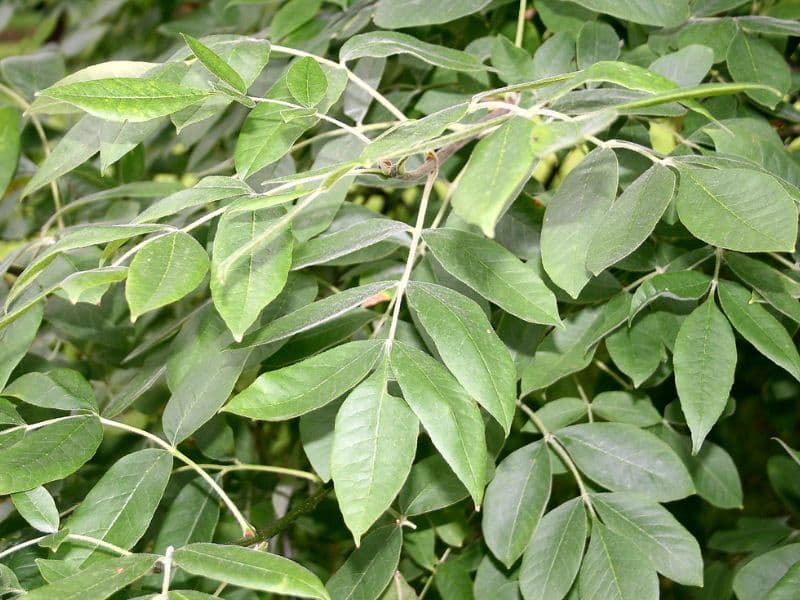
After leaves have fallen off the plant in fall and before it begins to leaf out, Oregon ash can be identified by its stout twigs and opposite branching arrangement and opposing buds. Unlike bigleaf maples, ash twigs have woolly hairs. In mid to late spring, the tree produces small flowers that are not very noticeable. It is dioecious; it requires two separate plants (male and female) to successfully pollinate and reproduce.
The fruit, produced by female trees, is a cluster of samaras, 3–5 cm (1+1⁄8–2 in) long that includes wings similar to maple trees. It is shaped like a canoe, with the small seed located near one end.
The Oregon ash grows mostly in wet habitats and prefers damp, loose soils such as sloughs, swales, wet meadows, swamps, streams, and bottomlands. It grows from sea level to 900 m (3,000 ft) in elevation, up to 1,700 m (5,600 ft) in the south of the range in California. In central Southern California, it integrates with Fraxinus velutina (velvet ash) of southern California east into Arizona.
Oregon ash is intolerant of shade, and may eventually be replaced by more competitive trees such as bigleaf maples or conifers that block the light with their leaves or sheer size. This tree flourishes when its habitat become opened due to floods, blowdowns, or other disturbances. Oregon ash sprouts vigorously from cut stumps or fire-killed trees. Young trees typically grow vigorously for their first 60 years, with their growth slowing considerably in the following years.
This particular species of ash is well adapted to soggy ground due to its moderately shallow, but extensive and wide-spreading root system. This also allows for the tree to withstand wind storms exceptionally well. Ash tolerates flooding considerably better than Douglas-fir and grand fir. Oregon ash also provides nourishment to songbirds, squirrels, and water fowl by way of its seeds. Deer and elk have also been known to graze its foliage and sprouts.
II. How to Grow and Care
Sunlight
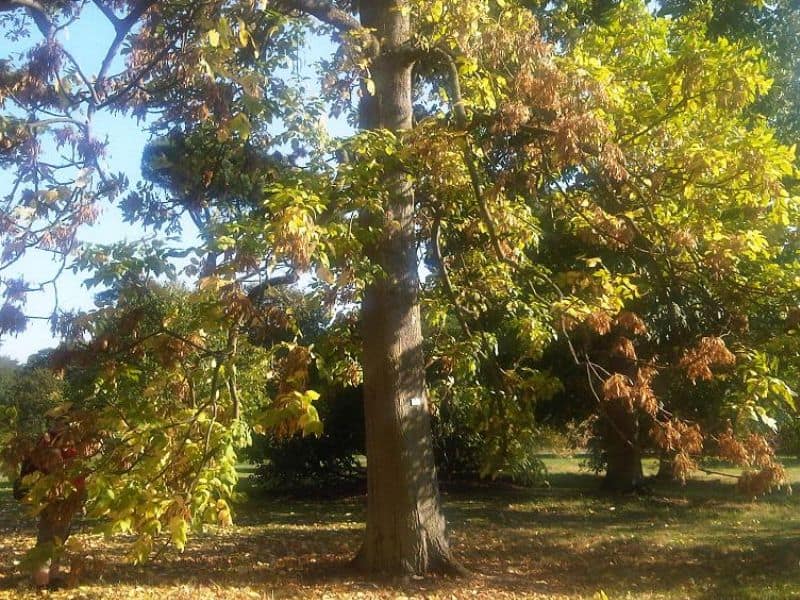
Oregon ash thrives in full sunlight, which supports its robust growth and contributes to its overall health. However, Oregon ash exhibits a degree of flexibility by tolerating partial sun conditions, though its growth may not be as vigorous. In its natural habitat, oregon ash is often found in areas that receive ample daylight, making it well-suited for outdoor settings.
While it can adapt to less than ideal lighting by adjusting leaf orientation and photosynthetic efficiency, consistently optimal light ensures maximum vitality. Recommended planting for Oregon ash is in locations where they can bask in unfiltered sunlight or receive only light shade.
Temperature
Oregon ash is widely distributed in temperate and subtropical regions of the northern hemisphere. It prefers cool, moist environments. It is resistant to heat, and can tolerate temperatures. Moist environments allow oregon ash to grow better. It can also tolerate waterlogging and drought.
Watering
Adapted to the moist environments of its native habitat, oregon ash thrives with moderate hydration. This species is accustomed to consistent moisture levels and displays a preference for well-drained soils that mimic its natural setting. Watering should be adjusted to once every 1-2 weeks, ensuring soil remains damp but not waterlogged.
Typically grown outdoors due to its size and ecological role, oregon ash benefits from the seasonal rainfall patterns that contribute to its growth cycle, making it an excellent candidate for rain gardens or areas with similar climate conditions.
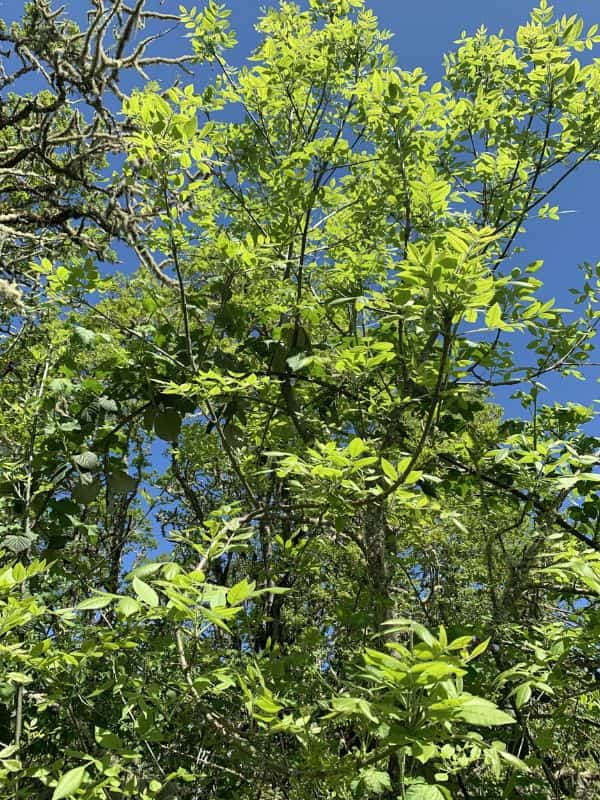
Soil
Oregon ash can grow in many types of soil. It likes soil with sufficient nutrients. The soil pH is not important; it can survive in a variety of pH levels, from alkaline to acidic. Oregon ash prefers soil with good drainage, but can also tolerate drought and standing water.
Fertilizing
For oregon ash, fertilize with balanced nutrition in spring and high nitrogen in fall, semi-annually. This bolsters growth and vigor. Use manufacturer’s recommended dose, halved for young trees. Over-fertilizing can burn roots, so apply carefully. Seasonal adjustments ensure optimal nutrient absorption. Novices should start with slow-release granular fertilizer, experts may use fast-acting liquid forms judiciously. Always water oregon ash after applying fertilizer to aid in distribution and reduce root burn risk.
Pruning
Prune oregon ash in fall so the pruning wound can heal before the plant goes dormant in winter. Pruning also prevents winter rain and snow from crushing the branches. It is best to prune young trees every year and prune mature oregon ash every few years. Do some pruning regularly, such as removing some dead or diseased branches. When pruning, make sure to remove branches that are overgrown or crossed over. This promotes air circulation and prevents disease. If your oregon ash is particularly tall, it’s best to have it pruned by a professional.
Propagation
Oregon ash trees can be propagated by seed or by cutting. Take cuttings in spring or summer, when the tree is less stressed. When cutting in summer, shade the tree to prevent excessive evaporation of water. Choose branches that grew in the current or last year, and cut 15 cm branches, preferably with 3-4 buds. Insert them into moist, sandy soil, and they will take root within 8 weeks.
The sowing process is complicated and Oregon ash trees need a long time to grow, so propagating by sowing is not usually recommended. If you want to sow oregon ash, do it in spring, and start in a pot. Place the seeds in 1.3 cm-deep soil and cover them with plastic film. Store the pots in a refrigerator for three months. Next, place it on a heating mat (or somewhere else) and keep it at 21 to 24 ℃ for three months. During this period, make sure to keep the soil moist. The seeds will germinate within six weeks.
Transplanting
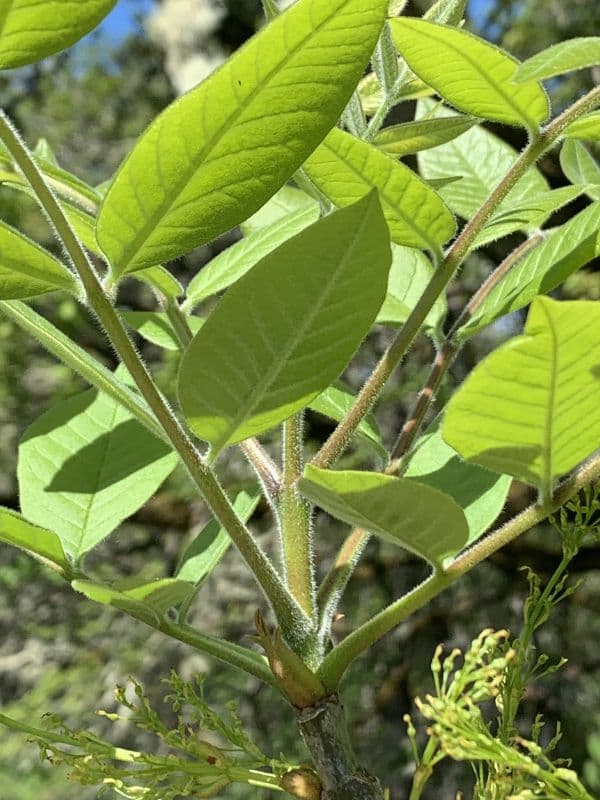
The preferred transplanting time for oregon ash is late winter to early spring (S3-S4), providing optimal growth conditions. A well-drained, sunny location is ideal. Remember, oregon ash is tolerant to various soil types, so placement flexibility is an asset. Extra watering during the first year post-transplant supports a successful transition.
III. Uses and Benefits
- Ornamental uses
The oregon ash is a useful tree in landscape settings. This species is valued ornamentally because it grows symmetrically, rapidly, and hardily. The oregon ash is considered a good tree to create shade, as well as a good specimen tree planted in a landscaping setting.
- Other uses
Oregon ash is intolerant of shade, and may eventually be replaced by more competitive trees such as bigleaf maples or conifers that block the light with their leaves or sheer size. This tree flourishes when its habitat becomes open due to floods, blowdowns, or other disturbances. Oregon ash sprouts vigorously from cut stumps or fire-killed trees. Young trees typically grow vigorously for their first 60 years, with their growth slowing considerably in the following years.
This particular species of ash is well adapted to soggy ground due to its moderately shallow, but extensive and wide-spreading root system. This also allows for the tree to withstand wind storms exceptionally well. Ash tolerates flooding considerably better than Douglas-fir and grand fir. Oregon ash also provides nourishment to songbirds, squirrels, and waterfowl by way of its seeds. Deer and elk have also been known to graze its foliage and sprouts.
IV. Harvesting and Storage
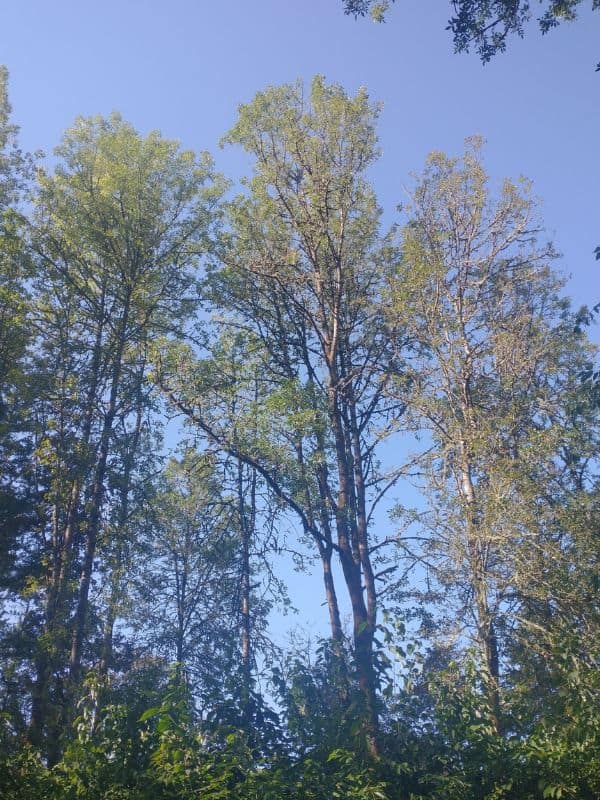
If you want to collect oregon ash seeds for planting, harvest the fruit in the fall when it turns from green to tan. The dried seeds can be stored at room temperature for 3-5 years.
Find Where to Buy the Best Oregon Ash (Fraxinus latifolia)







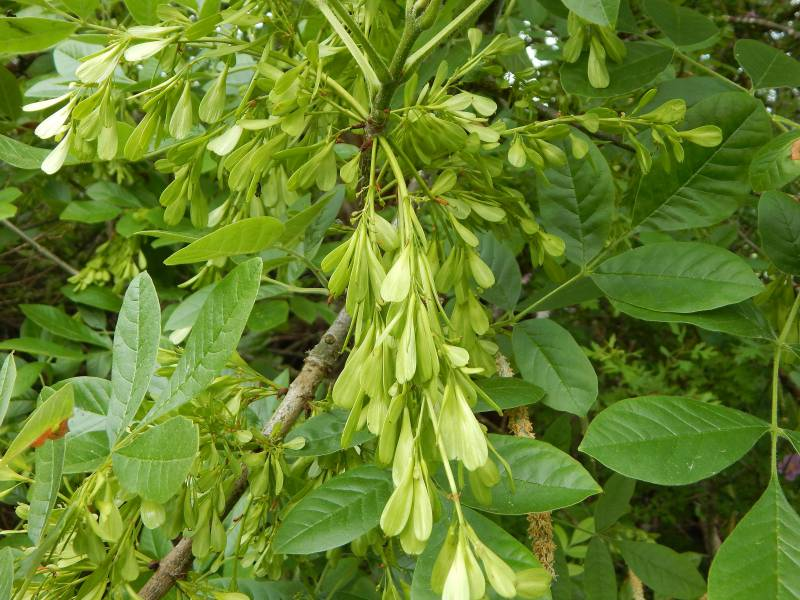










Leave a Reply